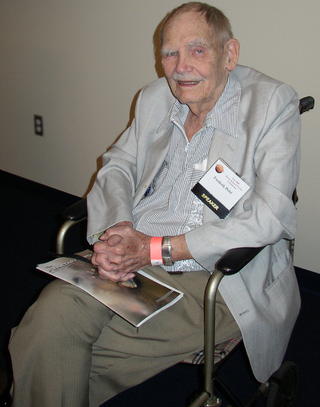
Frederik George Pohl Jr. was an American science-fiction writer, editor, and fan, with a career spanning nearly 75 years—from his first published work, the 1937 poem "Elegy to a Dead Satellite: Luna", to the 2011 novel All the Lives He Led.
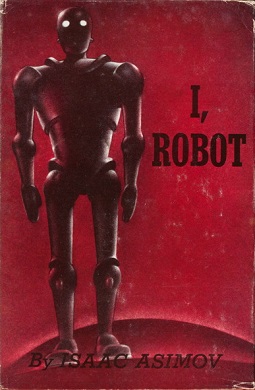
I, Robot is a fixup collection made up of science fiction short stories by American writer Isaac Asimov. The stories originally appeared in the American magazines Super Science Stories and Astounding Science Fiction between 1940 and 1950 and were then collected into a 1950 publication Gnome Press in 1950, in an initial edition of 5,000 copies.

Isaac Asimov was an American writer and professor of biochemistry at Boston University. During his lifetime, Asimov was considered one of the "Big Three" science fiction writers, along with Robert A. Heinlein and Arthur C. Clarke. A prolific writer, he wrote or edited more than 500 books. He also wrote an estimated 90,000 letters and postcards. Best known for his hard science fiction, Asimov also wrote mysteries and fantasy, as well as popular science and other non-fiction.

The Foundation series is a science fiction book series written by American author Isaac Asimov. First published as a series of short stories and novellas in 1942–50, and subsequently in three collections in 1951–53, for nearly thirty years the series was a trilogy: Foundation (1951); Foundation and Empire (1952); and Second Foundation (1953). It won the one-time Hugo Award for "Best All-Time Series" in 1966. Asimov later added new volumes, with two sequels: Foundation's Edge (1982) and Foundation and Earth (1986), and two prequels: Prelude to Foundation (1988) and Forward the Foundation (1993).
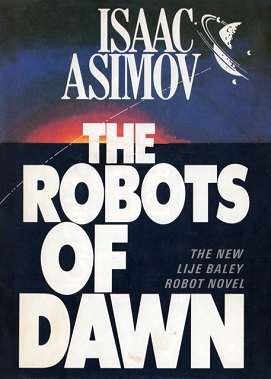
The Robot series is a series of thirty-seven science fiction short stories and six novels created by American writer Isaac Asimov, published from 1940 to 1995. The series is set in a world where sentient positronic robots serve a number of purposes in society. To ensure their loyalty, the Three Laws of Robotics are programmed into these robots, with the intent of preventing them from ever becoming a danger to humanity. Later, Asimov would merge the Robot series with his Foundation series.
The Galactic Empire series is a science fiction sequence of three of Isaac Asimov's earliest novels, and extended by one short story. They are connected by their early place in his published works and chronological placement within his overarching Foundation universe, set around the rise of Asimov's Galactic Empire, between the Robot and Foundation series to which they were linked in Asimov's later novels.

The Three Laws of Robotics are a set of rules devised by science fiction author Isaac Asimov, which were to be followed by robots in several of his stories. The rules were introduced in his 1942 short story "Runaround", although similar restrictions had been implied in earlier stories.

Foundation's Triumph (1999) is a science fiction novel by American writer David Brin, set in Isaac Asimov's Foundation universe. It is the third book of the Second Foundation trilogy, which was written after Asimov's death by three authors, authorized by the Asimov estate. Brin synthesizes dozens of Foundation-Empire-Robots novels and short stories by Isaac Asimov, Roger MacBride Allen, and authorized others into a consistent framework. Foundation's Triumph includes an appendix chronology compiled by Attila Torkos.
"Blind Alley" is a science fiction short story by American writer Isaac Asimov. It was first published in the March 1945 issue of Astounding Science Fiction, and later included in the collection The Early Asimov (1972).
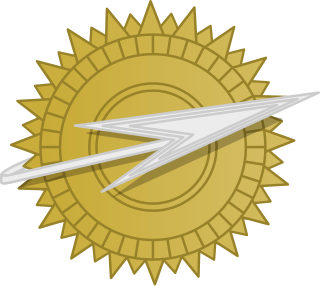
The Galactic Empire is an interstellar empire featured in Isaac Asimov's Robot, Galactic Empire, and Foundation series. The Empire is spread across the Milky Way galaxy and consists of almost 25 million planets settled exclusively by humans. For over 12 millennia the seat of imperial authority was located on the ecumenopolis of Trantor, whose population exceeded 40 billion, until it was sacked in the year 12,328. The official symbol of the empire is the Spaceship-and-Sun. Cleon II was the last Emperor to hold significant authority. The fall of the empire, modelled on the fall of the Roman Empire, is the subject of many of Asimov's novels.
Isaac Asimov's Robots and Aliens is a series of novels written by various authors and loosely connected to Isaac Asimov's Robot series. Each volume is complete in itself, but they form a continuing series. The series follows the action of the novels of the Isaac Asimov's Robot City series, with the same protagonists Derec and Ariel, and many other characters. The plot deals with the Three Laws and encounters between robots and different varieties of alien life.
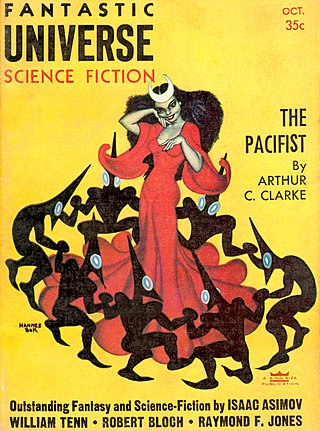
"First Law" is a science fiction short story by American writer Isaac Asimov, first published in the October 1956 issue of Fantastic Universe magazine and later collected in The Rest of the Robots (1964) and The Complete Robot (1982). The title of the story is a reference to the first of the Three Laws of Robotics.
Robert Thurston was a science fiction author well known for his works in popular shared world settings.
Arthur Byron Cover is an American science fiction author.
Steven Earl Popkes is an American science fiction writer, known primarily for his short fiction. He was nominated for the Nebula and Sturgeon Awards for the short story "The Color Winter" (1988).
William F. Wu is a Chinese-American science fiction, fantasy, and crime author.
Francis Marion Busby was an American science fiction writer and science fiction fan. In 1960 he was a co-winner of the Hugo Award for Best Fanzine.

Gregory Frost is an American author of science fiction and fantasy, and directs a fiction writing workshop at Swarthmore College in Swarthmore, Pennsylvania. He received his Bachelor's degree from the University of Iowa. A graduate of the Clarion Workshop, he has been invited back as instructor several times, including the first session following its move to the University of California at San Diego in 2007. He is also active in the Interstitial Arts Foundation.
Michael Joseph Cassutt is an American television producer, screenwriter, and author. His notable TV work includes producing or writing, or both, for The Outer Limits, Eerie, Indiana, Beverly Hills, 90210, and The Twilight Zone. In addition to his work in television, Cassutt has written over thirty short stories, predominately in the genres of science fiction and fantasy. He has also published novels, including the 1986 The Star Country, the 1991 Dragon Season, the 2001 Red Moon and the 2011 Heaven's Shadow, in collaboration with David S. Goyer. In addition, Cassutt contributes non-fiction articles to magazines and is the author of the non-fiction book, The Astronaut Maker, a biography of NASA legend George W. S. Abbey (2018).
The Foundation universe is the future history of humanity's colonization of the galaxy, spanning nearly 25,000 years, created through the gradual fusion of the Robot, Galactic Empire, and Foundation book series written by American author Isaac Asimov.










